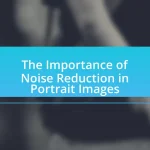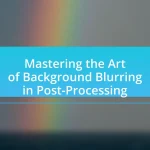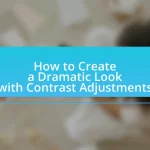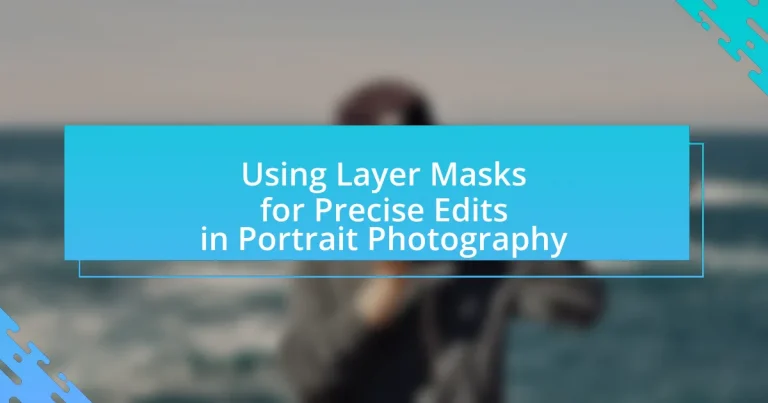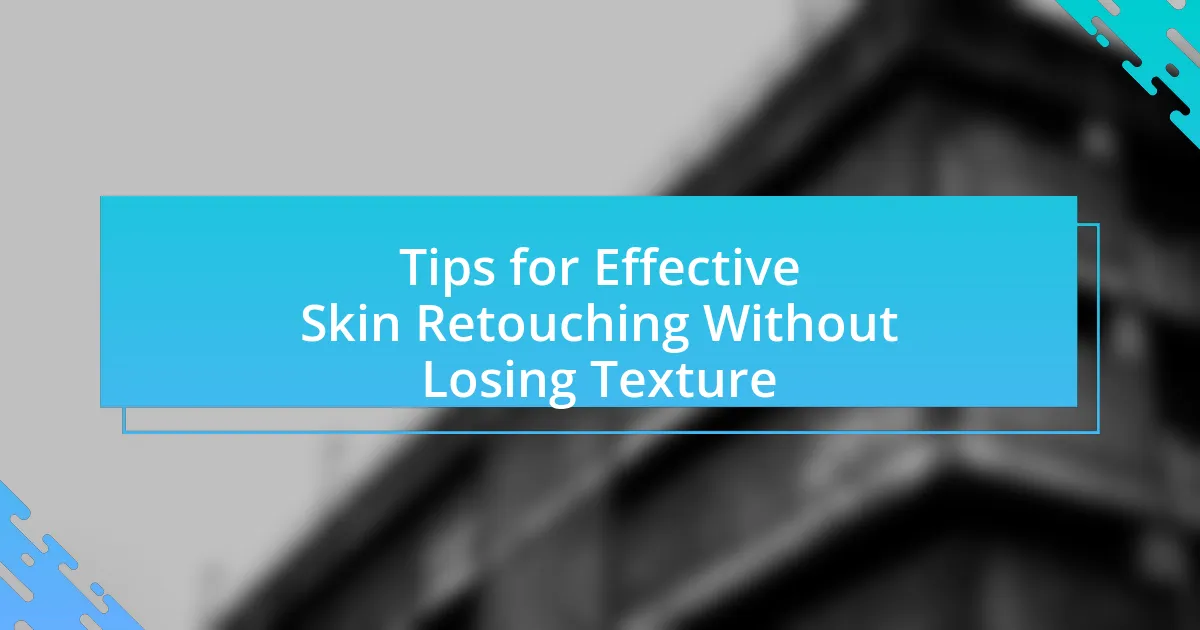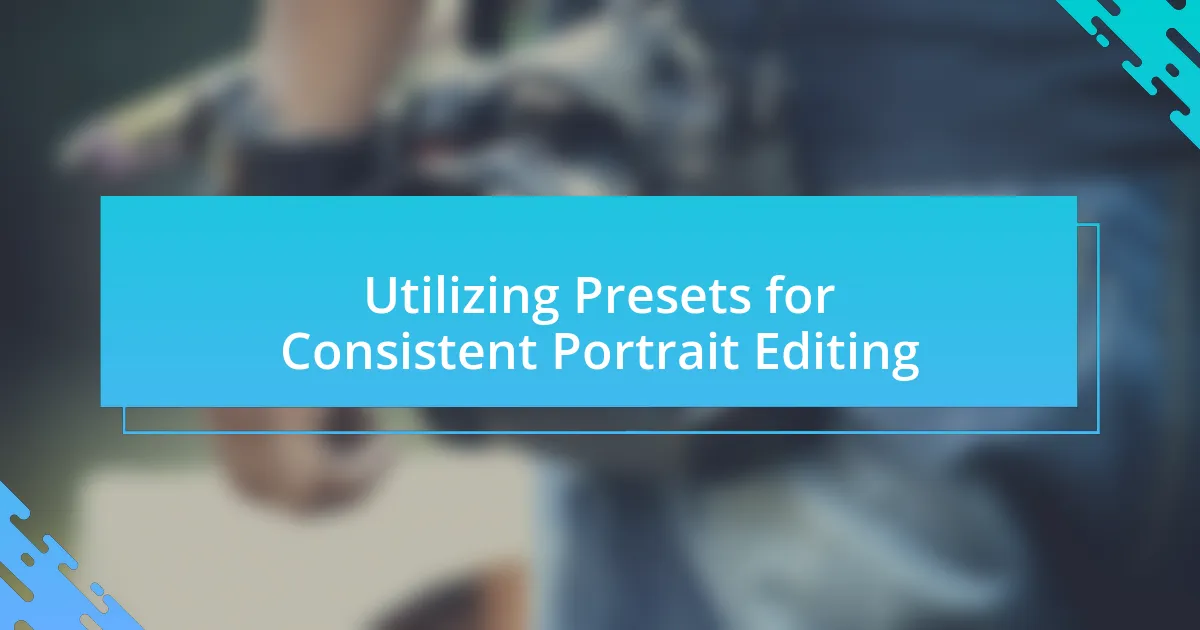Layer masks are essential tools in portrait photography that enable non-destructive editing by allowing photographers to selectively modify specific areas of an image without altering the original photograph. This article explores the functionality of layer masks, detailing their principles, advantages, and techniques for effective use in portrait editing. Key topics include the creation and refinement of layer masks, common mistakes to avoid, and advanced techniques for selective adjustments and blending. Additionally, the article highlights the best software options for utilizing layer masks, providing practical tips for mastering this crucial editing technique.
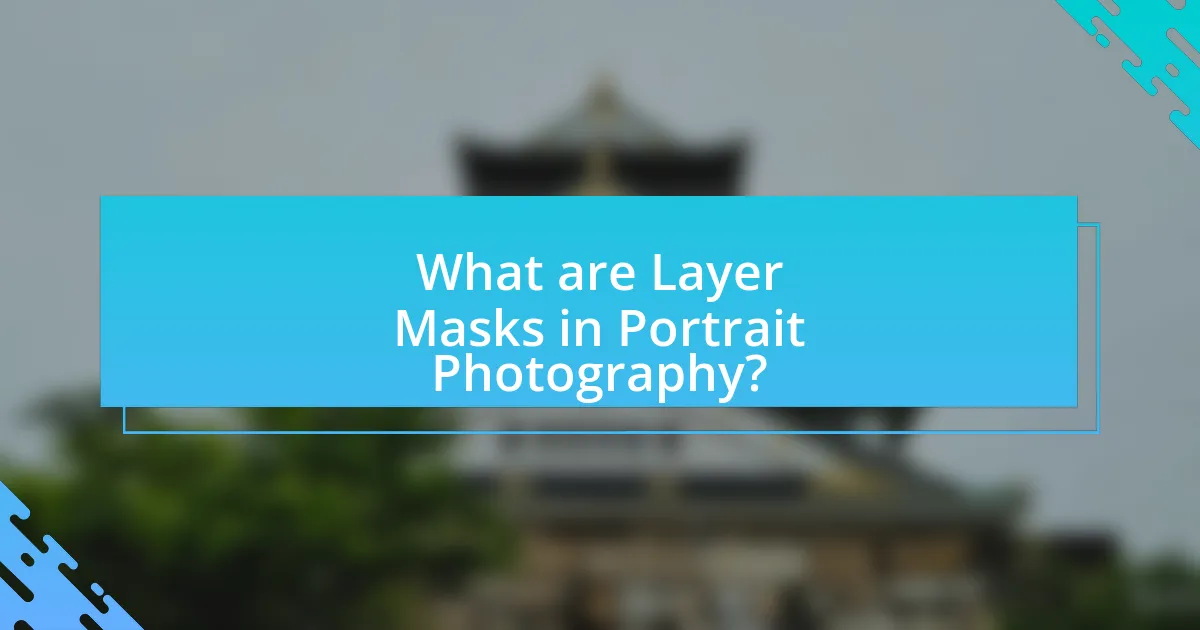
What are Layer Masks in Portrait Photography?
Layer masks in portrait photography are tools that allow photographers to selectively edit specific areas of an image without permanently altering the original photograph. By using a layer mask, a photographer can apply adjustments, such as exposure or color correction, to only the areas painted with the mask, while leaving the rest of the image unaffected. This non-destructive editing technique is essential for achieving precise edits, as it enables the photographer to refine details and enhance the overall composition without compromising the integrity of the original image.
How do Layer Masks function in photo editing?
Layer masks in photo editing allow users to selectively hide or reveal portions of a layer without permanently altering the original image. This functionality enables precise control over edits, as adjustments can be made to specific areas while leaving others untouched. For instance, in portrait photography, a layer mask can be applied to enhance the subject’s features while maintaining the background’s integrity, facilitating targeted adjustments such as brightness or color correction. The non-destructive nature of layer masks ensures that edits can be modified or reversed at any time, providing flexibility and creative freedom in the editing process.
What are the basic principles of Layer Masks?
Layer masks are fundamental tools in image editing that allow for non-destructive adjustments by controlling the visibility of different parts of a layer. The primary principle of layer masks is that they use grayscale values to determine transparency: white reveals the layer, black conceals it, and shades of gray provide varying levels of transparency. This functionality enables precise edits, such as selectively applying adjustments or effects to specific areas of an image without permanently altering the original layer. The effectiveness of layer masks is widely recognized in professional photography, particularly in portrait editing, where they facilitate detailed retouching and blending techniques.
How do Layer Masks differ from other editing tools?
Layer masks differ from other editing tools by allowing non-destructive editing, which means changes can be made without permanently altering the original image. Unlike tools such as brushes or erasers that directly modify pixels, layer masks enable selective visibility of layers, allowing for precise adjustments to specific areas while preserving the overall image integrity. This functionality is crucial in portrait photography, where maintaining the original quality of the subject is essential for achieving professional results.
Why are Layer Masks important for precise edits?
Layer masks are important for precise edits because they allow for non-destructive adjustments to images, enabling selective editing without permanently altering the original layer. This functionality is crucial in portrait photography, where maintaining the integrity of the subject while enhancing specific areas, such as skin tones or backgrounds, is essential for achieving a polished final image. By using layer masks, photographers can easily refine their edits, revert changes, and create complex compositions with greater control, ultimately leading to higher quality results.
What advantages do Layer Masks provide in portrait photography?
Layer masks offer significant advantages in portrait photography by allowing for non-destructive editing. This means photographers can make adjustments to specific areas of an image without permanently altering the original photograph. For instance, layer masks enable precise control over exposure, color correction, and retouching, allowing for targeted enhancements that maintain the integrity of the overall image. Additionally, they facilitate seamless blending of different elements, such as backgrounds or effects, which is crucial for achieving a polished final look. The ability to easily modify or remove adjustments without affecting the base layer further enhances creative flexibility, making layer masks an essential tool in portrait editing workflows.
How do Layer Masks enhance the editing workflow?
Layer masks enhance the editing workflow by allowing non-destructive adjustments to images, which means edits can be modified or removed without permanently altering the original layer. This flexibility enables photographers to refine specific areas of a portrait, such as adjusting exposure or color balance, while preserving the integrity of the overall image. Additionally, layer masks facilitate precise blending of multiple elements, allowing for seamless integration of adjustments and effects. This capability is crucial in portrait photography, where maintaining natural skin tones and details is essential for a polished final result.
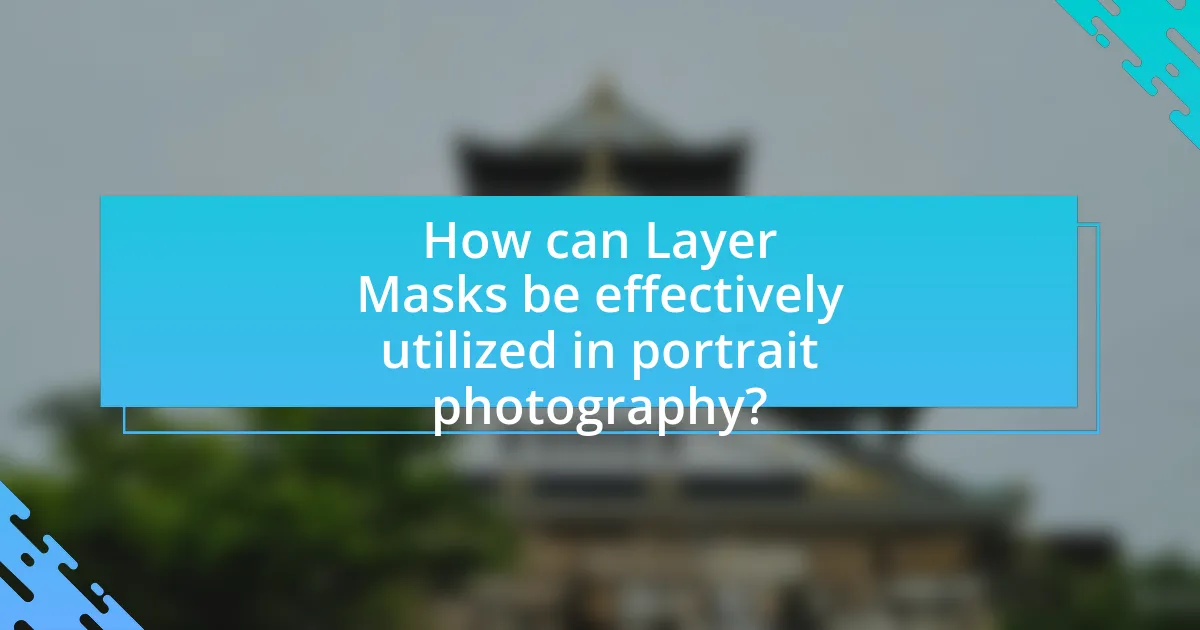
How can Layer Masks be effectively utilized in portrait photography?
Layer masks can be effectively utilized in portrait photography by allowing photographers to selectively edit specific areas of an image without permanently altering the original photograph. This technique enables precise adjustments such as enhancing skin tones, blurring backgrounds, or applying creative effects to certain features while preserving the integrity of the rest of the image. For instance, using a layer mask to isolate a subject’s face allows for targeted retouching, such as smoothing skin or brightening eyes, while leaving the background untouched. This method is widely recognized in the industry for its non-destructive editing capabilities, which maintain the original image quality and provide flexibility for future adjustments.
What are the steps to create a Layer Mask?
To create a Layer Mask in image editing software like Adobe Photoshop, first, select the layer you want to mask. Next, click on the “Add Layer Mask” button located at the bottom of the Layers panel. This action adds a white thumbnail next to the layer, indicating that the mask is active. After that, use the Brush tool with black to paint over areas you want to hide, or white to reveal areas. The mask allows for non-destructive editing, meaning you can adjust or remove the mask without permanently altering the original layer. This method is widely used in portrait photography for precise edits, as it enables selective adjustments without affecting the entire image.
How do you apply a Layer Mask to a portrait image?
To apply a Layer Mask to a portrait image, first select the layer containing the portrait in your editing software. Then, click on the Layer Mask icon, typically represented by a rectangle with a circle inside, to add a mask to the selected layer. This action allows you to paint on the mask with black to hide parts of the image or white to reveal them, enabling precise edits. Layer Masks are non-destructive, meaning you can adjust or remove them without permanently altering the original image. This technique is widely used in portrait photography for tasks such as refining edges, blending backgrounds, or selectively applying adjustments.
What techniques can be used to refine Layer Masks?
To refine Layer Masks, techniques such as feathering, adjusting opacity, and using brush tools are essential. Feathering softens the edges of the mask, creating a smoother transition between the masked and unmasked areas, which is crucial for achieving natural-looking edits in portrait photography. Adjusting opacity allows for fine-tuning the visibility of the mask, enabling a more subtle effect. Additionally, using brush tools with varying hardness and opacity settings provides precise control over the areas being masked or revealed, allowing for detailed adjustments that enhance the overall quality of the portrait. These techniques collectively improve the effectiveness of Layer Masks in achieving seamless edits.
What common mistakes should be avoided when using Layer Masks?
Common mistakes to avoid when using Layer Masks include not inverting the mask when necessary, which can lead to unintended visibility of layers, and failing to use a soft brush for blending, resulting in harsh edges. Additionally, neglecting to regularly check the mask’s effect on the image can cause inconsistencies in the final edit. Lastly, overusing black and white brushes without understanding their impact can lead to loss of detail and depth in the image. These mistakes hinder the effectiveness of layer masks in achieving precise edits in portrait photography.
How can improper use of Layer Masks affect the final image?
Improper use of Layer Masks can lead to visible artifacts and unnatural transitions in the final image. When masks are not applied correctly, such as using hard edges instead of soft gradients, the blending between layers can appear harsh and unrealistic. This can detract from the overall quality of portrait photography, making subjects look poorly integrated into their backgrounds. Additionally, incorrect masking can result in loss of detail in important areas, such as facial features, which diminishes the image’s impact. Studies in digital imaging emphasize that precise masking techniques are crucial for achieving seamless edits, underscoring the importance of proper application in maintaining image integrity.
What are the best practices for maintaining image quality with Layer Masks?
To maintain image quality with Layer Masks, use high-resolution images and avoid excessive scaling. High-resolution images ensure that details remain sharp when applying masks, while scaling can lead to pixelation and loss of quality. Additionally, utilize soft brushes for blending edges, as this technique minimizes harsh lines and preserves the natural look of the image. It is also essential to work non-destructively by keeping original layers intact, allowing for adjustments without compromising the original image quality. Finally, regularly zoom in to check details and refine the mask, ensuring that the final output retains clarity and precision.
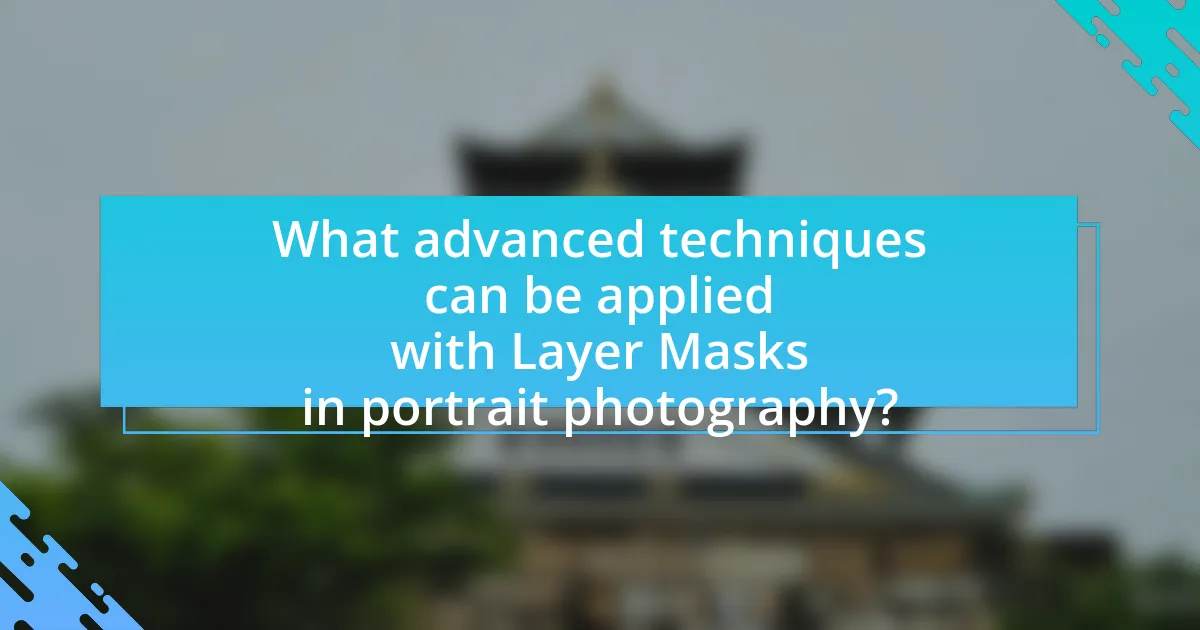
What advanced techniques can be applied with Layer Masks in portrait photography?
Advanced techniques that can be applied with Layer Masks in portrait photography include selective adjustments, blending modes, and non-destructive editing. Selective adjustments allow photographers to enhance specific areas of a portrait, such as brightening the eyes or smoothing skin tones, without affecting the entire image. Blending modes enable creative effects by altering how layers interact, which can enhance textures or colors in the portrait. Non-destructive editing ensures that original image data remains intact, allowing for adjustments to be modified or reversed at any time. These techniques enhance the overall quality and creativity of portrait photography while maintaining control over the editing process.
How can Layer Masks be combined with other editing techniques?
Layer masks can be combined with other editing techniques such as adjustment layers, blending modes, and filters to enhance portrait photography. By using layer masks, photographers can selectively apply adjustments to specific areas of an image, allowing for precise control over exposure, color correction, and sharpness. For instance, when applying an adjustment layer for brightness, a layer mask can be used to limit the effect to only the subject’s face, preserving the background’s original exposure. Additionally, blending modes can be utilized in conjunction with layer masks to create unique effects, such as softening skin tones while maintaining texture. Filters can also be applied selectively using layer masks, enabling the photographer to enhance details or apply artistic effects without affecting the entire image. This combination of techniques results in a more refined and polished final portrait.
What are the benefits of using Layer Masks with adjustment layers?
Using Layer Masks with adjustment layers allows for non-destructive editing, enabling precise control over the visibility of adjustments applied to specific areas of an image. This technique enhances flexibility, as it permits the user to modify or remove adjustments without affecting the original image layer. Additionally, Layer Masks facilitate targeted adjustments, allowing for selective enhancement of features such as skin tones or backgrounds, which is particularly beneficial in portrait photography. The ability to paint on the mask with varying opacities further allows for smooth transitions and blending, resulting in a more natural final image.
How can Layer Masks be used for selective color adjustments?
Layer masks can be used for selective color adjustments by allowing specific areas of an image to be targeted for color changes without affecting the entire image. When a layer mask is applied to an adjustment layer, it enables the user to paint with black or white on the mask to reveal or conceal the adjustment in certain areas. For example, painting with black on the mask will hide the color adjustment in that area, while painting with white will reveal it. This technique provides precise control over which parts of the image receive the color adjustment, making it ideal for enhancing skin tones or backgrounds in portrait photography. The effectiveness of this method is supported by its widespread use in professional editing software, such as Adobe Photoshop, where layer masks are a fundamental feature for non-destructive editing.
What tools and software are best for using Layer Masks?
Adobe Photoshop is the best software for using Layer Masks due to its comprehensive features and industry-standard capabilities. Photoshop allows users to create, edit, and manipulate layer masks with precision, enabling seamless blending and adjustments in portrait photography. Additionally, Affinity Photo is another strong contender, offering similar functionalities at a lower cost, making it accessible for both professionals and enthusiasts. GIMP, a free and open-source alternative, also supports layer masks, providing essential tools for users who require budget-friendly options. These software options are widely recognized in the photography community for their effectiveness in achieving precise edits through layer masking techniques.
Which photo editing software offers the best Layer Mask features?
Adobe Photoshop offers the best Layer Mask features among photo editing software. Its advanced capabilities allow for non-destructive editing, enabling users to create intricate selections and adjustments with precision. Photoshop’s layer masks support various blending modes and can be easily edited with brushes, gradients, and filters, making it a preferred choice for professional portrait photographers. Additionally, the software’s extensive community and resources provide tutorials and plugins that enhance the layer masking process, further validating its status as the leading option in this area.
How do different tools within software affect Layer Mask usage?
Different tools within software significantly influence Layer Mask usage by providing varied functionalities that enhance precision and control in editing. For instance, selection tools like the Magic Wand or Lasso allow users to create more accurate masks by isolating specific areas of an image, which is crucial in portrait photography for refining details such as hair or facial features. Additionally, brush tools enable users to manually refine masks, adjusting opacity and flow to achieve smoother transitions and more natural results. Furthermore, adjustment layers can be applied to Layer Masks, allowing for non-destructive edits that can be modified or removed without affecting the original image. This flexibility is essential for achieving high-quality edits in portrait photography, where subtle adjustments can make a significant difference in the final outcome.
What are some practical tips for mastering Layer Masks in portrait photography?
To master Layer Masks in portrait photography, start by understanding the basics of how Layer Masks work, as they allow for non-destructive editing by controlling the visibility of layers. Use a soft brush with low opacity for blending adjustments seamlessly, which helps in creating smooth transitions, especially around delicate areas like hair and skin. Additionally, utilize the shortcut keys for quick access to Layer Mask functions, such as pressing Alt (Option on Mac) while clicking on the mask to view it in isolation, enabling precise edits. Regularly zoom in to check details and ensure accuracy in your masking, as this can prevent visible edges or artifacts. Finally, practice using different brush settings and opacity levels to achieve varied effects, which enhances your ability to manipulate images effectively.





